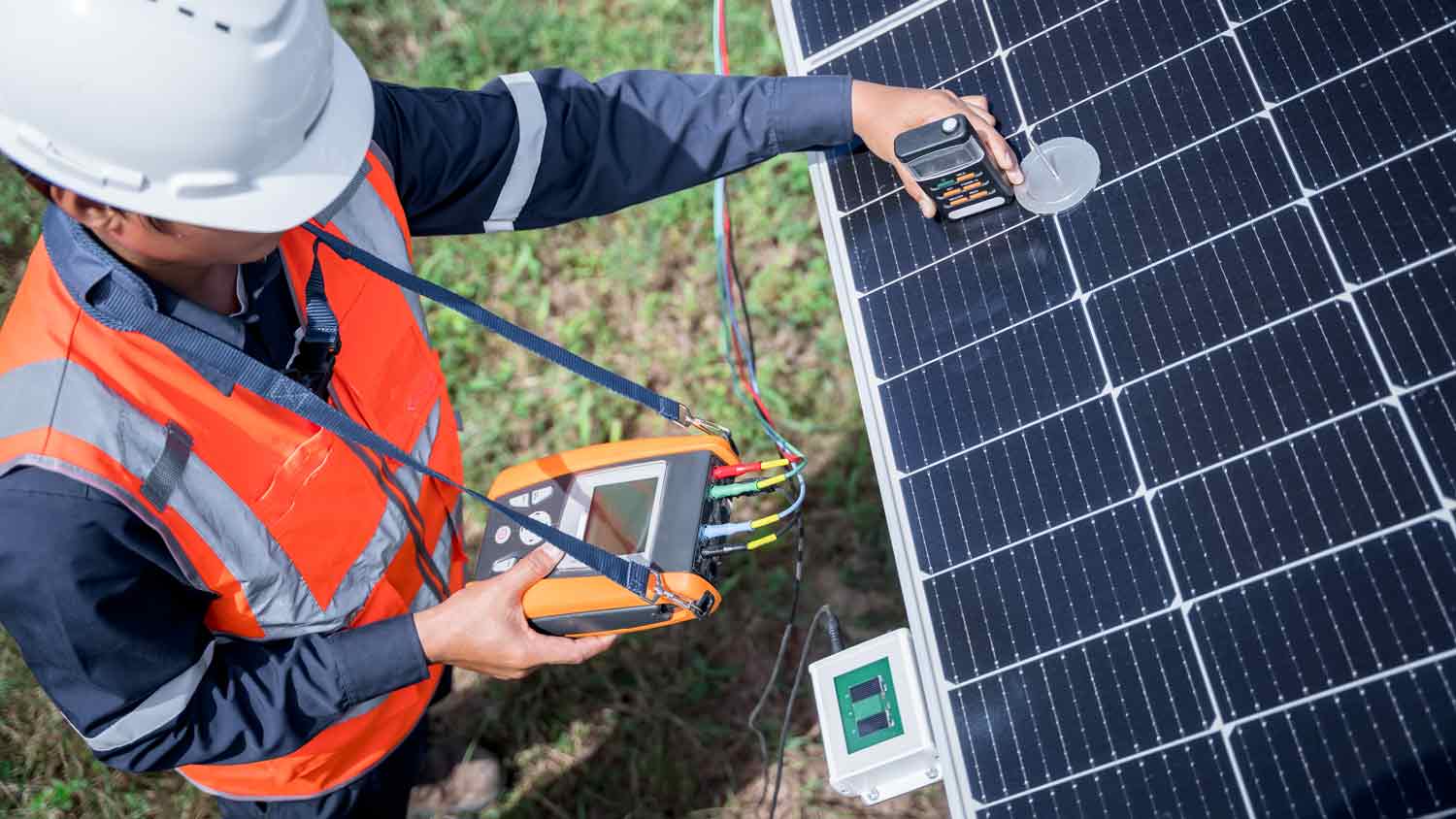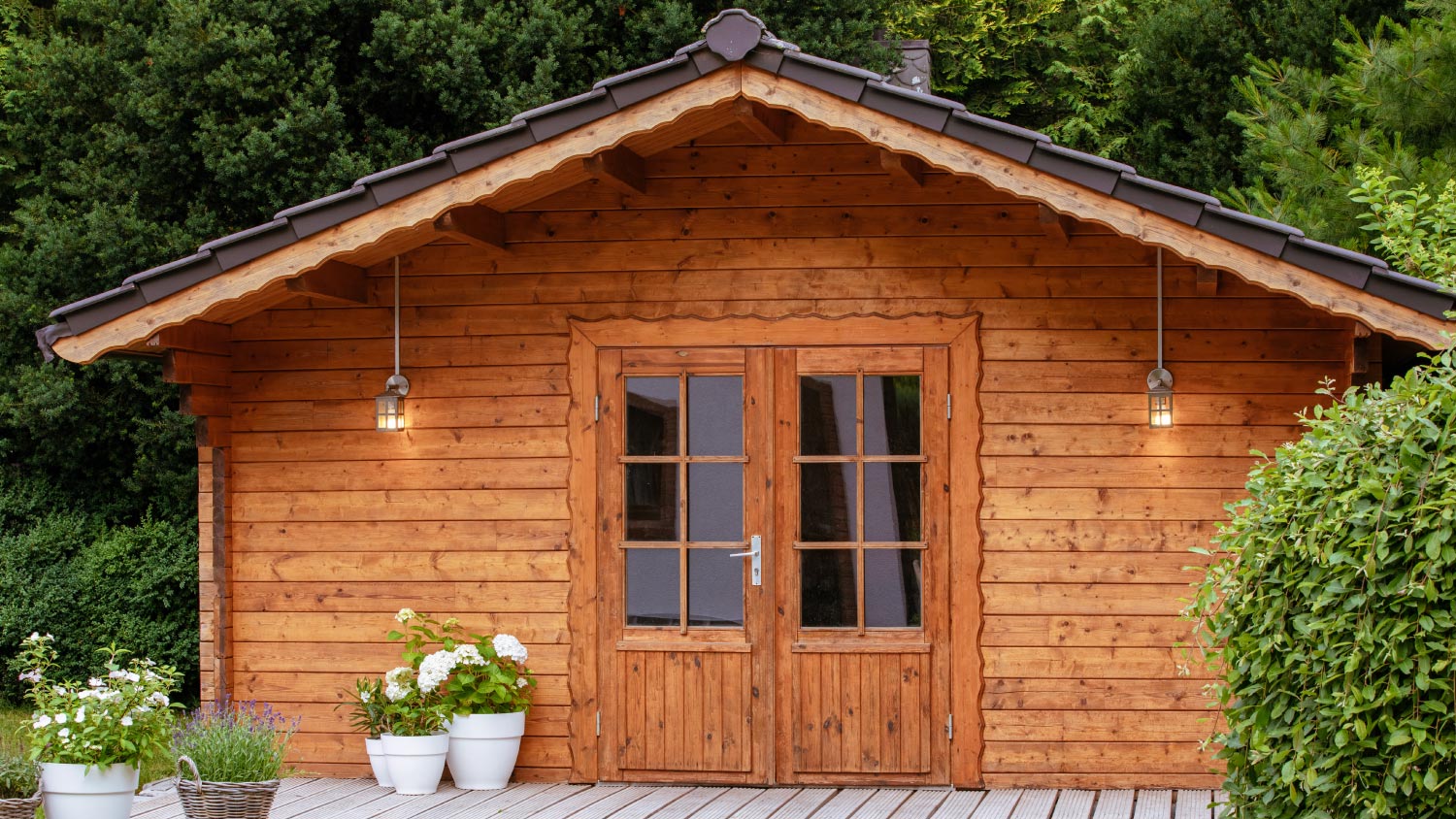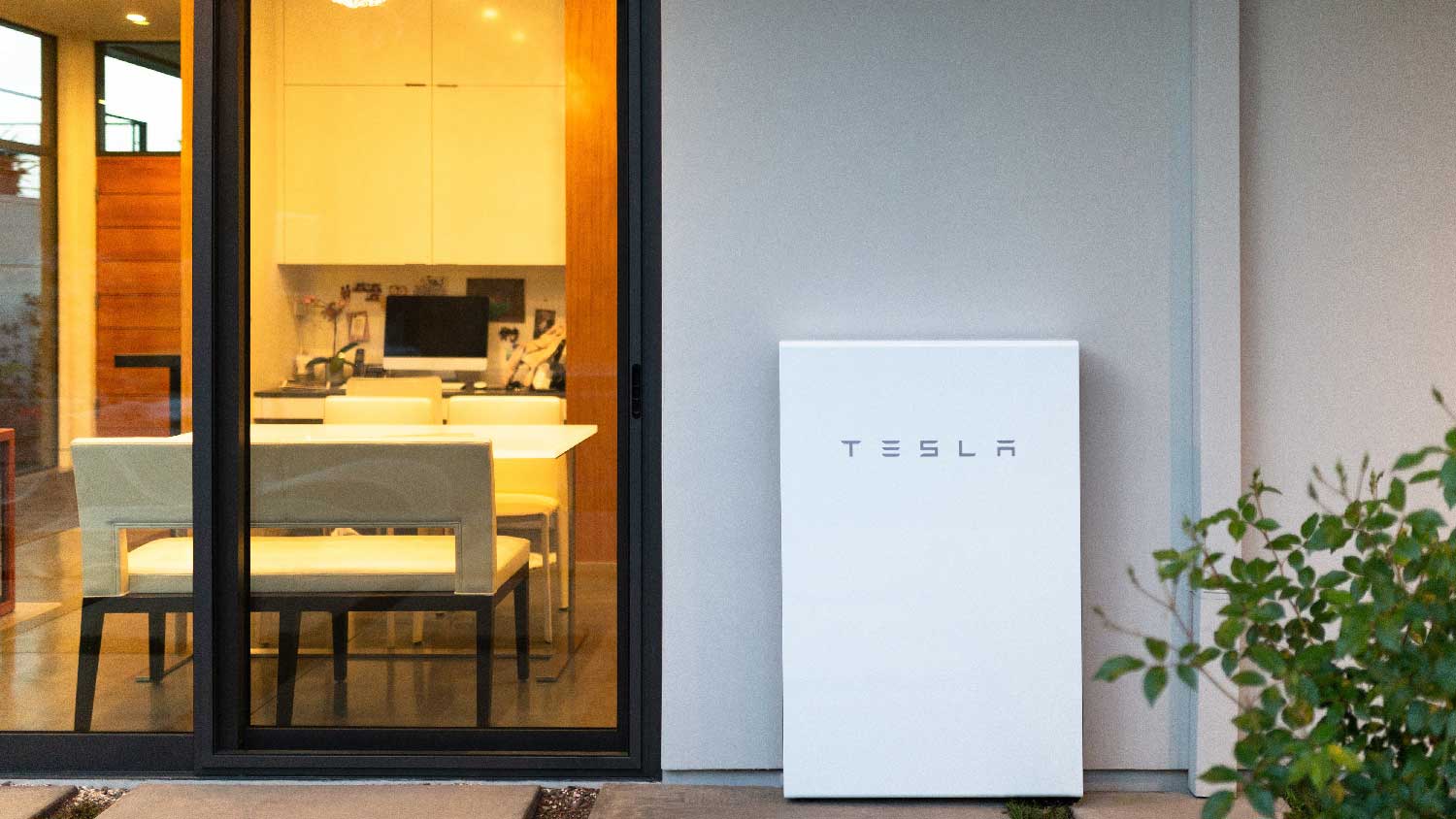
Discover the average solar panel inspection cost, what impacts pricing, and how to save. Get expert tips to keep your solar system efficient and safe.
It’s time to shed light on your backyard’s solar poten


Solar panels for a shed can lower your energy bills and increase your property value.
Solar panels can be used as a backup power source if the power goes out.
DIY solar panel kits range in price from $100 to $3,000.
Whether you use your backyard shed as a home office or gym—or keep it simple and use it for storage—you can harness the power of the sun with shed solar panels. Homeowners who install solar panels on a shed can generate renewable energy and reduce electricity bills.
Here’s a guide for everything you need to know about installing solar panels on a shed, including how to DIY, the pros and cons, and how much solar panel installation costs.
The benefits of installing solar panels on your shed include energy savings, a possible increase in property value, and low maintenance requirements. There are also some cons to consider, as seen in the table below.
| Pros | Cons |
|---|---|
| Reduced energy costs | High upfront costs |
| Low maintenance requirements | Power output depends on sun exposure |
| Environmentally friendly | May need electric battery storage or backup power options |
After the initial cost to purchase and install solar panels, the ongoing costs are very low, and solar panels can save you a lot of money on energy over the years. Installing them on your shed will allow you to run light bulbs and power tools without the normal energy costs.
It’s not clear exactly how much installing solar panels on your shed will increase your property value, but according to a 2024 study conducted by SolarReviews, homes that have solar panels sell for 6.8% more compared to homes without solar panels.
The effect on property value will depend on where the home is located, the system size, and whether the system is financed, among other factors.
Sunlight is a renewable and free resource, so installing solar panels on your shed allows you to take advantage of an environmentally-friendly energy source. Once the panels are installed, if the system is large enough to create all the power you need, you won’t need to draw energy from the grid to power lights or tools or use fossil fuels to generate heat.
Solar panels for your shed can be used as a backup power source in the event that the power goes out. You can also install a backup battery that will store solar energy until you need it.
Solar panels come with low maintenance requirements. All you need to do is clean them periodically, keep them free of debris and other obstructions, and have them professionally inspected once a year to ensure they are working properly.
There are two types of solar panels that you can choose to install on your shed. Solar panels, regardless of type, consist of a number of layers starting with a glass plate on the top. The semiconductor layer is sandwiched between encapsulation EVA materials, and a polymer plastic sheet is layered on the back. The main difference between types of solar panels is the material that the semiconductor layer is made from: either monocrystalline or polycrystalline silicon.
Monocrystalline solar panels have a monocrystalline silicon layer in the center, which is made from a single silicon ingot sliced into wafer-like pieces. These pieces then make up the semiconductor layer of the solar panel. Monocrystalline solar panels are more efficient than polycrystalline panels and often have a longer lifespan. They can also perform better in low-light conditions than their polycrystalline counterparts, but they are typically more expensive.
Polycrystalline solar panels consist of a semiconductor layer that is made from melting different silicon crystals together. This type of solar panel is less efficient than monocrystalline panels, and you may need to install more panels to get the same output. They are, however, less expensive, because the process to manufacture them is easier and doesn’t cost as much.

If you need electricity in your shed, be it for recharging batteries, plugging in tools, or simply giving yourself some light to work, installing solar panels can save money and help the environment. If you have a large shed with a sturdy roof, it's even possible to outfit it with enough panels to supply power to your main property.
Here’s what to consider before installing solar panels on your shed:
If you use your shed to house gym equipment, charge batteries, or plug in power tools, you'll need a fairly powerful system to cover the amount of electricity you use. Keep in mind that your lowered energy bills will offset your upfront solar installation cost. You should determine how much electricity you’ll need by figuring out how many watts and lumens you require. A 60-watt bulb emits around 750-850 lumens of light. Bring an extension cord to your shed to power a work light to figure out how many watts you need. If one bulb feels too dim, look into solar kits that offer more than 60 watts (or 850 lumens).
Here are some common shed items and the wattage they require per hour:
Electric drill: 600 watts
Table saw: 1,800 watts
Electric leaf blower: 2,500 watts
Hedge trimmer: 250 watts
Modem: 20 watts
Coffee machine: 600 watts
Electric heater: 2,000 to 3,000 watts
Your shed's roof must be large enough and able to withstand the weight of the solar panels, especially if you require larger ones. A 250-watt panel weighs about 40 pounds and measures approximately 65-by-39 inches. Suppose your shed is old, or looks to have some roof damage. In that case, you should consider buying a new shed or repairing the roof before proceeding with a solar panel installation. FYI, your shed's roof isn't the only place you can install solar panels—you can look into ground mounts, carports, or solar pergolas and gazebos.
Time for a bit of math! If your shed needs 3,000 watts to function, a 250-watt panel can create up to 1,500 watts if there are six hours of sunlight. With a second panel, you’re up to 3,000. However, this assumes the panels are receiving 250 watts every hour—something that will likely only happen on days with idyllic, sunny weather. If you live in a place with less sunshine (Seattle, for instance), give yourself a buffer and install panels with 20% more wattage than you will need on average. For example, if you need those 3,000 watts, install two panels with 300 watts to provide 3,600 on those clear days. You might need to use a backup power source (such as a generator) on rainy or dark days.
Solar panel kits let homeowners go the DIY route and install panels themselves. If you opt to use a kit, be sure you're comfortable handling electrical work. If that's not your thing, consider hiring a local solar installation pro or an electrician near you who specializes in solar work.
The more solar panels you need, the more expensive the upfront costs. DIY solar panels range greatly in price, from $100 (for 100 watts) to $20,000 (10,000 kilowatts). Hiring an electrician or solar panel contractor will cost approximately $1,000 per 2,000 kilowatts installed.
Solar panel kits come with everything you need to install the panels and related equipment yourself. They help take the guesswork out when determining which parts will work together; it can otherwise be challenging to match collectors, charge controllers, and batteries.
In general, kits range in cost from $100 (just enough power to light the shed) to over $3,000 (enough energy needed for tools or charging batteries), depending on your needs. Higher-end models will likely include:
Solar collector panel: These panels convert photons into electrical currents
Charge controller: This device monitors the current to prevent battery damage
Battery: Stores the DC electricity
Inverter: Transforms DC electricity into AC electricity
AC Outlet: Plug-in tools or other items that need recharging
Lights: DC LED lights offer illumination and conserve the DC electricity
Less expensive options may only come with a small solar collector panel and a light to illuminate your shed. These kits (around $100) will provide light for about one hour.
The cost to install solar panels on a shed varies greatly depending on several factors; here are a few to consider.
Solar panels range in cost depending on how much wattage you need. Grape Solar, a popular solar kit seller which retails in big stores such as Home Depot and Costco, sells a 300-watt kit for $355 and a 600-watt kit for just under $1,000.
Should you wish to build a new shed, expect to pay between $100 and $750 for a plastic shed kit or hire a contractor to build a custom shed for $2,000 to $3,000.
Expect to pay $0.70 to $1.50 per watt; including labor, solar panel installation costs $2.50 to $3.50 per watt. You should only install panels if you own the property, or have permission from the property owner. In addition, you should check with your city and state to file any necessary permits. Finally, you should only go the DIY route if you have experience with electrical work.
From average costs to expert advice, get all the answers you need to get your job done.

Discover the average solar panel inspection cost, what impacts pricing, and how to save. Get expert tips to keep your solar system efficient and safe.

There are a few factors to consider when it comes to solar panel repair costs. This guide breaks down the prices of solar panel removal, repair, and replacement.

Discover the Tesla Powerwall installation cost, including average prices, cost factors, and tips to help homeowners budget and save on their Powerwall project.

Solar shingles are an unobtrusive alternative to solar panels. Learn more about them to decide if solar shingles are worth installing on your roof.

Solar panels offer instant savings on your monthly energy bill. But how much money do solar panels save, really? Learn about solar panel savings in this guide.

Solar inverters are a crucial part of your solar energy system. This guide breaks down solar inverter costs so you can estimate the price of your project.